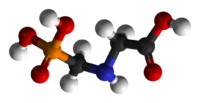
Photo from wikipedia
Abstract Perennial plants which propagate through both seeds and rhizomes are common in agricultural and nonagricultural systems. Due to their multifaceted life cycle, few population models are available for studying… Click to show full abstract
Abstract Perennial plants which propagate through both seeds and rhizomes are common in agricultural and nonagricultural systems. Due to their multifaceted life cycle, few population models are available for studying such species. We constructed a novel individual‐based model to examine the effects of ecological, evolutionary, and anthropogenic factors on the population dynamics of perennial species. To exemplify the application of the model, we presented a case study of an important weed, Sorghum halepense (L.) Pers. (Johnsongrass), in soybean productions in Argentina. The model encompasses a full perennial weed life cycle with both sexual (seeds) and asexual (rhizomes) propagations. The evolution of herbicide resistance was modeled based on either single genes or quantitative effects. Field experiments were conducted in the species' native environment in Argentina to parameterize the model. Simulation results showed that resistance conferred by single‐gene mutations was predominantly affected by the initial frequency of resistance alleles and the associated fitness cost. Population dynamics were influenced by evolved resistance, soil tillage, and rhizome fecundity. Despite the pivotal role of rhizomes in driving the population dynamics of Johnsongrass, most herbicides target the aboveground biomass, and chemical solutions to control rhizomes are still very limited. To maintain effective (short‐term) and sustainable (long‐term) weed management, it is recommended to combine soil tillage with herbicide applications for suppressing the rhizomes and delaying the evolution of resistance. This novel model of seed‐ and rhizome‐propagated plants will also be a useful tool for studying the evolutionary processes of other perennial weeds, cash crops, and invasive species.
Journal Title: Ecology and Evolution
Year Published: 2019
Link to full text (if available)
Share on Social Media: Sign Up to like & get
recommendations!